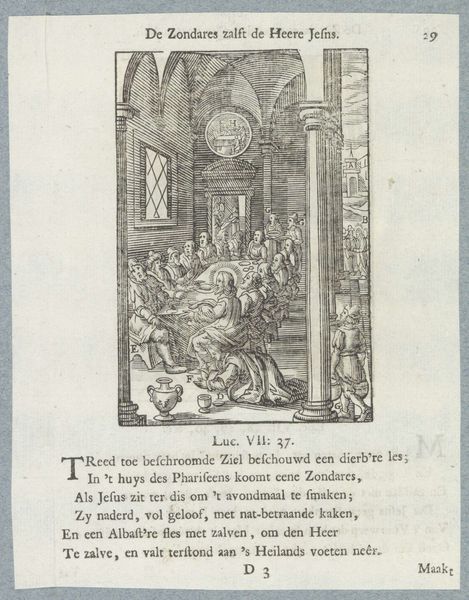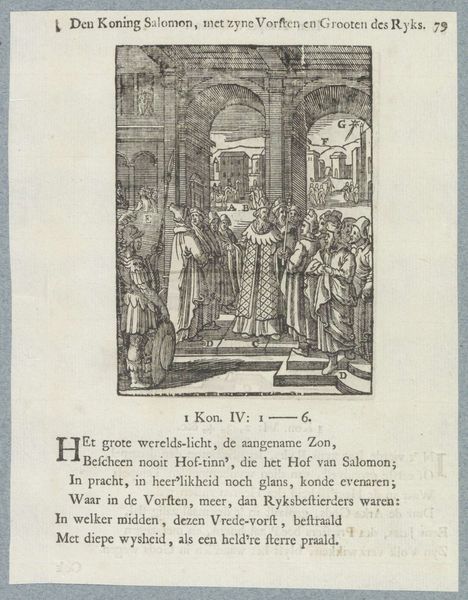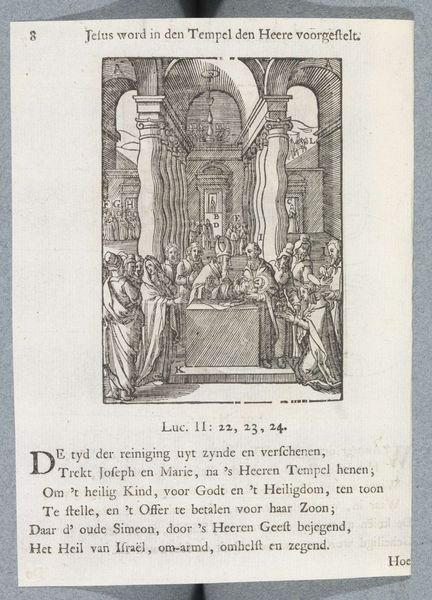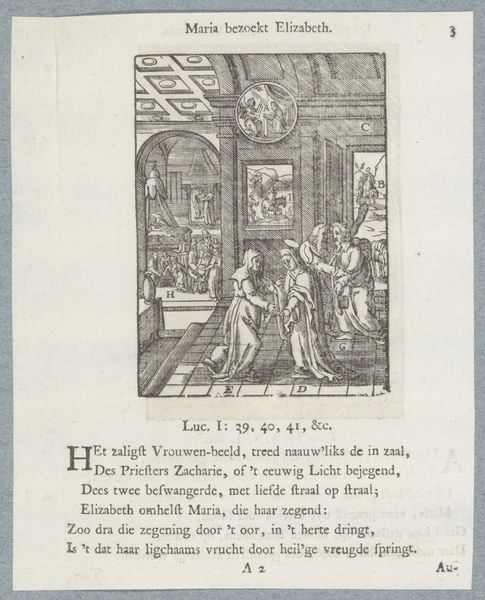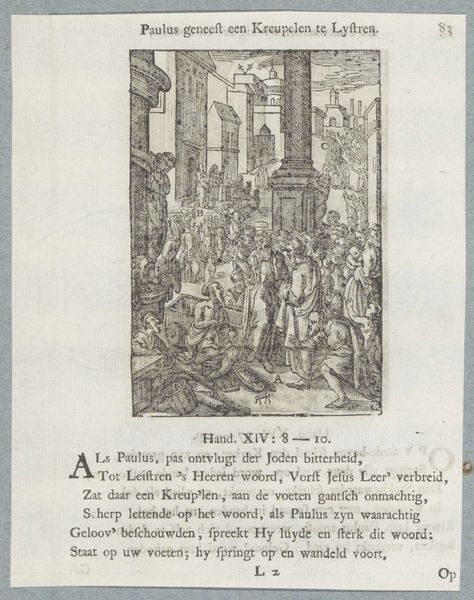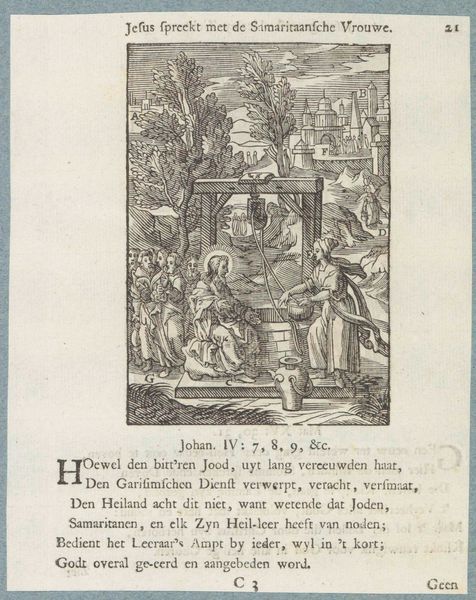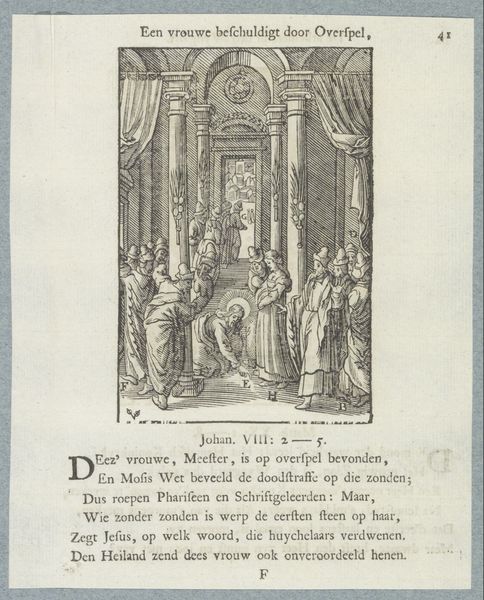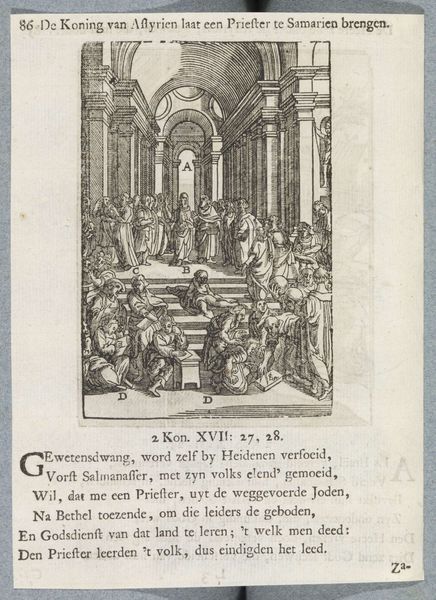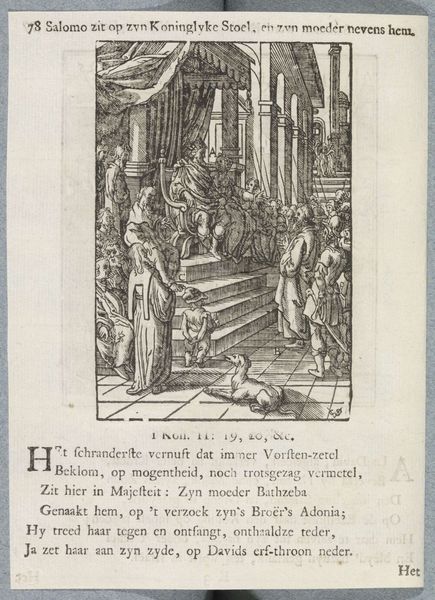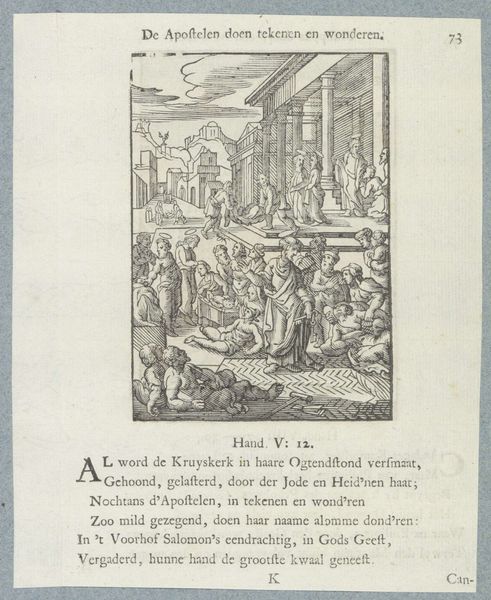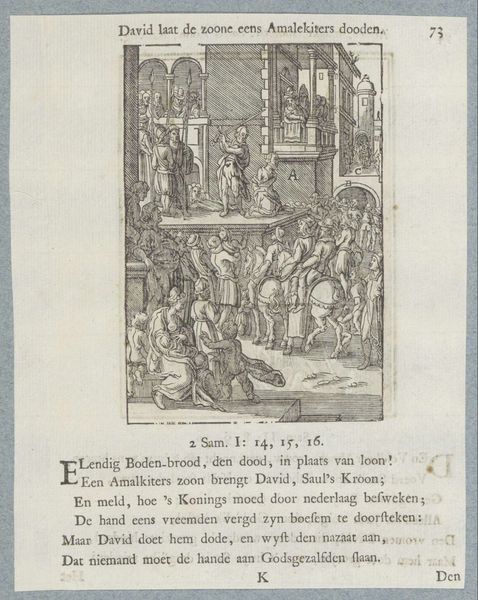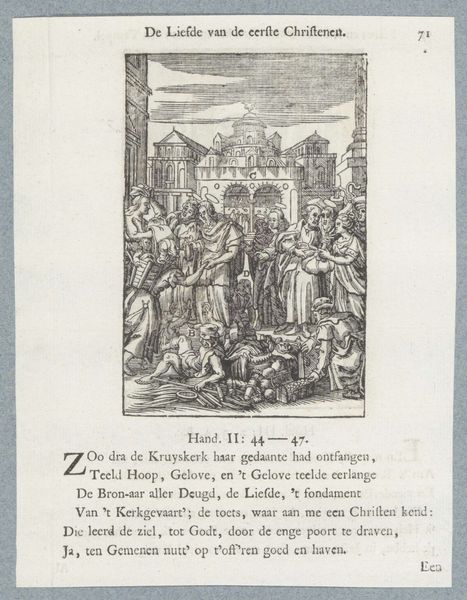
Preek van de apostel Petrus: 'de vergeving van de zonden' 1629 - 1740
0:00
0:00
print, engraving
#
narrative-art
#
baroque
# print
#
figuration
#
line
#
history-painting
#
engraving
Dimensions: height 110 mm, width 75 mm, height 170 mm, width 134 mm
Copyright: Rijks Museum: Open Domain
Editor: This is "Preek van de apostel Petrus: 'de vergeving van de zonden'" by Christoffel van (II) Sichem, dating somewhere between 1629 and 1740. It’s a print, an engraving to be exact, and the style seems to fall under the Baroque period. It reminds me of a stage, with all these characters and dramatic gestures frozen in place. What strikes you about this piece? Curator: It's fascinating to consider this image within its historical context. Prints like this one weren't just decorative; they were vital tools for disseminating ideas, particularly religious and political ones. Looking at the scene depicted – Peter preaching – consider the power dynamics at play. Who gets to speak, whose voices are amplified, and who is relegated to the background? How might this imagery have functioned within the socio-political landscape of the time? Editor: That's a really interesting perspective. I was focused on the art-historical context, the style, and the composition. What was society like when this piece was made? Curator: The artist operated in a society marked by religious conflict and reformation. Prints such as these became tools in this landscape. The message becomes: believe in redemption or face the consequences, visualized as those who may not attain the divine light in the image's background. The image thus attempts to reinforce social order and adherence to a specific belief system. Considering this lens of power reveals how art, even seemingly simple engravings, participates in larger conversations about control and belief. Editor: So, by focusing on who benefits from this image, and who is excluded or possibly threatened by it, we gain a totally new understanding? Curator: Exactly. This approach makes us think critically about the visual rhetoric employed and how it serves to promote certain ideologies. Art becomes a space where we negotiate power, identity, and belonging. Editor: I’ll never look at Baroque art the same way. Curator: And that’s the power of engaging with art through a critical lens. We move beyond aesthetics to confront the complex realities embedded within the artwork.
Comments
No comments
Be the first to comment and join the conversation on the ultimate creative platform.
